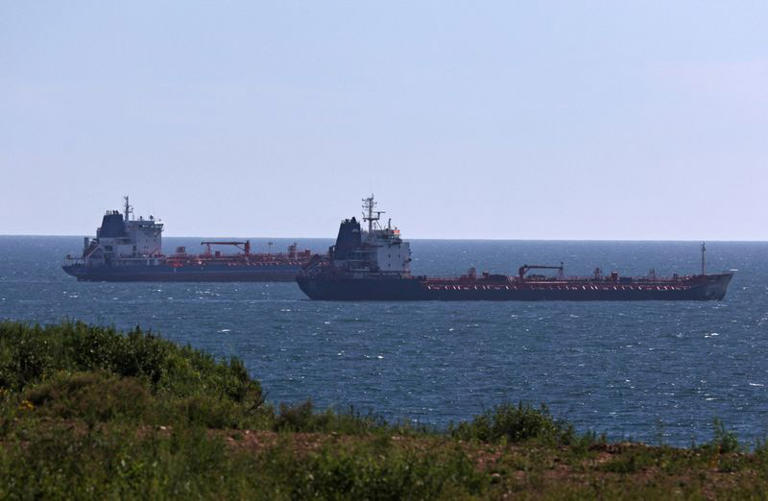Current Oil Price Trends and Market Dynamics
Oil prices have recently shown an upward trend, with Brent crude futures reaching $85.33 per barrel and U.S. West Texas Intermediate (WTI) crude futures at $81.86 per barrel, reflecting a 0.4% increase for both benchmarks. This rise comes amid a complex interplay of supply constraints, demand uncertainties, geopolitical tensions, and environmental factors influencing global oil markets.
Supply Side Factors: OPEC+ Cuts and Production Adjustments
The bullish sentiment in oil markets is largely underpinned by coordinated efforts among OPEC+ countries to maintain significant oil output cuts well into 2025. This coalition, comprising major oil-producing nations like Saudi Arabia and Russia, has extended production cuts aimed at stabilizing and potentially increasing oil prices. The decision to prolong these cuts has been crucial in tightening global oil supply, particularly amidst expectations of robust summer fuel consumption.
OPEC+ actions have been instrumental in managing global oil inventories and supporting prices, with analysts forecasting supply deficits in the third quarter as seasonal factors like increased transportation and air-conditioning demand draw down fuel stockpiles. The extension of production cuts by OPEC+ members underscores their commitment to balancing the market and sustaining price levels conducive to their economic interests.
Demand Dynamics: Economic Indicators and Consumption Patterns
While supply-side dynamics provide upward momentum to oil prices, concerns linger regarding global economic headwinds and varying demand trends across major economies. Economic indicators, including factory activity and consumer spending, play a crucial role in shaping oil demand forecasts.
In the United States, the world’s largest consumer of oil, fluctuations in gasoline demand and broader economic conditions impact market sentiment. Reports from the Energy Information Administration (EIA) indicating a rise in oil production and demand for major products to a four-month high in April have provided some support to oil prices. However, uncertainties persist, particularly regarding the sustainability of demand growth amidst economic recovery challenges and geopolitical uncertainties.
Similarly, in China, the world’s second-largest consumer and top crude importer, demand dynamics are influenced by both domestic economic conditions and global trade dynamics. Recent data showing mixed signals in Chinese industrial activity—strong growth in overseas orders but weak domestic demand—highlight the nuanced nature of demand patterns affecting oil markets. Analysts, such as those from ING, emphasize monitoring these demand-side indicators closely to gauge future oil price movements.
Geopolitical Factors: Tensions and Market Sentiment
Geopolitical tensions in key oil-producing regions have also contributed to market volatility and supported oil prices. Recent developments, including geopolitical tensions in Europe and conflicts between Israel and Lebanon’s Hezbollah, have heightened geopolitical risk premiums in oil markets. These tensions introduce uncertainty regarding potential supply disruptions and contribute to maintaining a floor under oil prices.
Moreover, expectations of geopolitical developments, such as U.S. foreign policy shifts and regional conflicts impacting oil-producing nations, continue to influence market sentiment. Analysts and investors alike factor in these geopolitical variables when assessing the overall risk environment for oil investments and market stability.
Environmental and Weather-Related Risks: Hurricane Season Impacts
Environmental factors, particularly weather-related risks such as the Atlantic hurricane season, also impact oil market dynamics. The early onset of the hurricane season, marked by Hurricane Beryl—a record-setting Category 4 storm—has raised concerns about potential disruptions to oil and gas production and consumption in the Americas.
Hurricanes and severe weather events in oil-producing regions like the Gulf of Mexico can lead to temporary shutdowns of offshore drilling platforms and refineries, affecting supply chains and contributing to short-term spikes in oil prices. Market participants closely monitor weather forecasts and hurricane trajectories to assess potential impacts on oil infrastructure and market stability.
Market Outlook and Analyst Perspectives
Looking ahead, analysts maintain a cautiously optimistic outlook on oil prices, balancing bullish supply-side factors with demand uncertainties and geopolitical risks. The extension of OPEC+ production cuts and expectations of summer fuel demand support provide a positive backdrop for oil prices in the near term. However, challenges such as economic recovery disparities among major economies, shifting consumer behavior, and geopolitical tensions warrant careful monitoring.
Strategists from financial institutions and energy market research firms highlight the importance of adaptive strategies in navigating the complex oil market landscape. They emphasize the role of data-driven insights, scenario planning, and risk management frameworks in mitigating volatility and maximizing investment opportunities amidst evolving market conditions.
Conclusion
In conclusion, the recent increase in oil prices reflects a multifaceted interplay of supply-side constraints, demand dynamics, geopolitical tensions, and environmental risks shaping global oil markets. The extension of OPEC+ production cuts, coupled with seasonal demand expectations and geopolitical uncertainties, underscores the delicate balance influencing oil price trajectories.
As stakeholders across the energy sector—from oil producers and investors to policymakers and consumers—navigate these dynamic forces, proactive engagement with market developments and strategic decision-making will be crucial. Monitoring economic indicators, geopolitical developments, and environmental risks will provide insights into future oil price movements and opportunities for sustainable market participation.
By fostering a comprehensive understanding of these factors and their interconnectedness, market participants can better position themselves to navigate uncertainties, capitalize on emerging opportunities, and contribute to a resilient and adaptive global oil market ecosystem.
